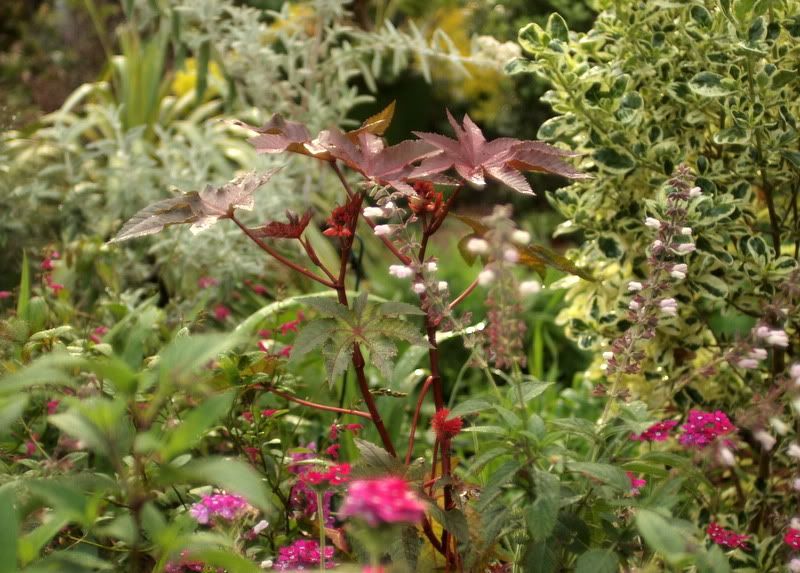On the Agave Walk this cerise Chilean showoff opens its first flower of spring. Zone 8-10.
The calandrinia sprawls onto the Agave Walk and is cut back by half to allow foot traffic. Even with this heavy-handed treatment it flowers prolifically all summer long. Greeny-blue succulent leaves, a tough plant for full sun, best with minimal supplemental irrigation to contain the tendency to sprawl. Its vigor matches that of Senecio mandraliscae, in that they both will overrun detailed succulent plantings. These types of aggressive sprawlers are perfect to edge pathways, where you can cut as much or as little back as you like, depending on if you’re in an expansive mood and welcoming visitors all summer or must keep your head down and work through the season, in which case you let the sprawlers loose to take over the pathways. I’m kidding, of course (sort of.)
I love the way most gardeners are instinctive cartographers of their little worlds, giving imposing-sounding names like the “Agave Walk” to a stretch of walkway no bigger than 10 feet long, 4 feet wide, named for the potted agaves that have been congregating here, mostly so I can watch the interplay of solidity and movement the agaves take part in with the perennials and grasses planted just behind the pots.
Just behind the agave walk in the main border, the castor bean ‘New Zealand Red’* is starting to elbow its way out of the pack. Ricinus has naturalized in Southern California in waste areas, so I’m keeping a careful eye on this one all summer. What broke down my resistance was this variety, the best red I’ve seen so far.
*Edited to correct name to ‘New Zealand Purple.’



Hi Denise! Your Castor Bean is a beauty! I had an opportunity last fall to see the naturalized California Castor Bean crop alongside many roads we traveled. I think that was one of the things that convinced me to grow it. If it can grow there without people and pets dropping dead then surely I can grow it in my garden, right? Well that’s my rationalization at least.
Hope my little seedlings develop into a healthy plant like yours, although I doubt I’ll be getting color that spectacular.
Hi Loree — I just did a quick search and find more hits on ‘New Zealand Purple,’ though I was fairly sure I bought it under NZ Red. In any case, it comes true from seed so I’ll be saving some, said to need more warmth for germination, and that it is a giant (yikes!) Your seedlings are looking great.
You said full sun for the calandrinia spectabilis. Full sun in Phoenix?
Hi Kathleen — I found this entry on Dave’s Garden: “On Jan 23, 2015, poeciliopsis from Phoenix, AZ wrote:
Central Phoenix — I have variable luck with Calandrinia spectabilis. But it is so lovely I don’t mind growing it as an annual. It is easily rooted from cuttings. I often lose it to summer heat but it survives winter, including this winter’s freeze of 26F. I grow it in partial shade, and it seems to want more sun, but a plant I tried in half day sun did not survive.” — https://davesgarden.com/guides/pf/go/112396/#b
Sounds like it’s going to be challenging giving it the sun it needs to bloom yet keep it from getting fried. Right off the bat I’d say afternoon sun is ruled out.